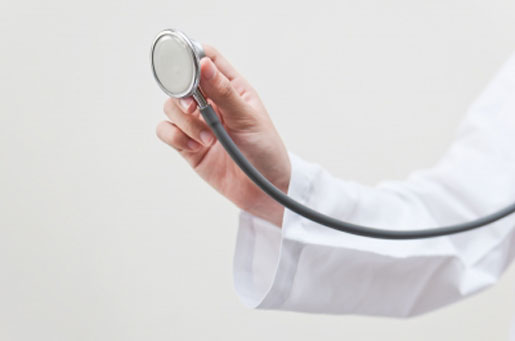How are innovations in health IT allowing better patient care and preventing all-too-common medical errors?
May 27, 2016

How are innovations in health IT allowing better patient care and preventing all-too-common medical errors?
Peter Ziese, PhD, MD
Patient safety continues to be a top priority for health care providers and hospital administrators, but as care expands beyond the four hospital walls, so must our approach to patient safety. While the challenge is ongoing, new medical and consumer technologies continue to evolve within the health care industry, providing new, improved ways for providers to address this issue. While these technological solutions can play an integral role in better addressing patient needs, the first step to successful integration is evaluating how new technology can help eliminate preventable medical errors and improve the patient experience across the health care continuum.
Mobilizing the Patient to Reduce Infections
According to The Center for Disease Control and Prevention (CDC), 1 in 25 U.S. patients suffer from hospital acquired infections (HAI) each year, and hospital acquired infections (HAIs) directly result in prolonged stays in the ICU - with some patients even extending their stay up to 3 times the average visit. With HAIs resulting in an estimated additional cost of $30 billion each year, this also presents a major patient safety challenge that hospitals must prioritize.
Technology advances are making it possible for hospitals to address and reduce infections to improve patient recovery and limit complications. For example, wireless and other mobile technologies can make it possible for patients to move freely in their room or around the hospital, while providing clinicians with constant updates on a patient's health to help detect the early signs of an infection. Making movement a priority can help patients avoid issues such as pneumonia which can lead to sepsis--a life threatening condition--as well as bedsores and other conditions that can slow down the recovery process. Additionally, leveraging non-invasive and wireless technologies give the patient the ability to move around and get out of the hospital bed, leading to positive effects to their mental disposition.
To reduce infections, hospitals are also turning to non-invasive alternatives wherever possible. With the standard ventilation process, clinicians intubate patients bypassing the natural infection-preventing barriers like tonsils, consequently exposing the lungs to a higher risk of infection. In fact, ventilator-acquired pneumonia (VAP) is the second most common HAI, and while there are several points of contact when a patient can be vulnerable to infection during ventilation intubation, hospitals can reduce these risks by leveraging non-invasive technologies. A non-invasive alternative uses a mask that is simply placed on the nose, limiting exposure to infections and allowing the patient to stay mobile during their recovery. Research has shown a direct correlation between increased mobility and better patient outcomes specifically in those undergoing prolonged mechanical ventilation.
Using Patient Data for Early Detection and Intervention
Although emerging technologies such as the availability of real-time patient data has delivered benefits to ensure quality patient care, it has also posed some new challenges when it comes to patient safety. For example, clinicians now receive hundreds of alerts, patient calls and monitor alarms, making it difficult to prioritize actions. As technology evolves, alarms must also get smarter, striking a balance between sensitivity and specificity to eliminate the ongoing challenge of alarm fatigue. These smarter alarms make it easier for providers to transition care beyond the bedside without losing the ability to detect when something is wrong and intervene as needed.
Technologies that offer alarm management capabilities can also help clinicians triage alerts, enhancing patient safety and reducing non-actionable alarms for clinical staff. Similarly, early warning scoring (EWS) technologies support real-time patient vital signs--such as blood pressure, heart rate, respiratory rate and body temperature--while producing a single alert for when the patient is showing signs of distress. Technologies that aggregate patient data in real-time and support early detection can help clinicians make informed decisions and take preventative action. Additionally, allowing clinicians to have access to these alerts on the go can further support earlier response, regardless of the caregiver's or the patient's location.
Improving the At-Home Patient Experience
As we continue to the shift to a value-based care model, clinicians need to look at the programs and processes to improve transitions of care to keep patients healthy, even after they've left the hospital. With a focus on reducing readmissions, providers and clinicians need to leverage monitoring tools to ensure that once a patient is discharged, they can recover well at-home with minimized risk of complications.
Remote monitoring technologies can play a larger role in home patient care while ensuring patient safety. For example, connected sensors can help ensure a patient's vital signs are being consistently monitored even after hospital discharge. This enables the clinical staff to contact the patient remotely from the hospital for a quick check-up on their vital signs, address any irregularities, and connect directly with the patient to intervene in the case of a more serious problem or emergency. Connected technology can improve patient recovery time, reduce rates of readmission, and ultimately keep the patient's safety at the center of their care.
When effectively utilized, health care IT can play a key role in improving patient safety by continuously engaging patients in order to keep them informed in how their care develops. In addition, collaboration across the health care continuum is critical to ensure that the needs of several stakeholders--from doctors and nurses to patients--are considered as technology continues to evolve. As a result, the power of health IT will be properly harnessed to improve clinician workflow, hospital procedures and ultimately, patient safety.
Peter Ziese, PhD, MD, is head of sales and marketing at Philips Patient Care and Monitoring Solutions.
[Image courtesy of SMOKEDSALMON/FREEDIGITALPHOTOS.NET]
You May Also Like


